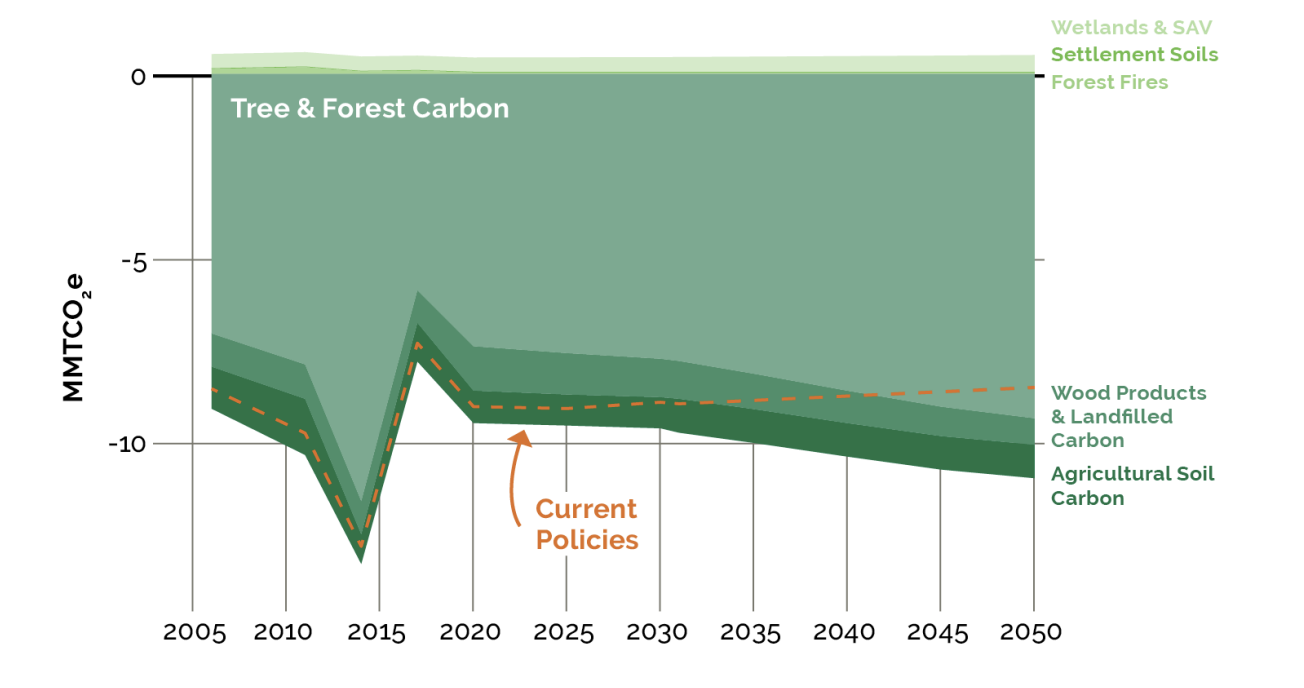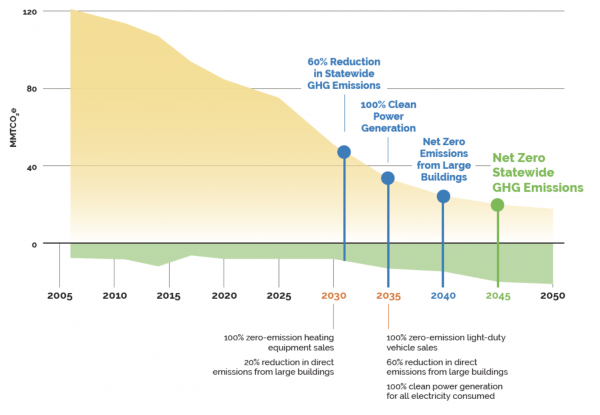GEOG’s Expertise Illuminates Maryland's Climate Pollution Reduction Plan
The Maryland Department of the Environment recently released Maryland's Climate Pollution Reduction Plan. This plan outlines key strategies and investments aimed at reducing greenhouse emissions 60% by 2031 and keeping the state on track to achieve net zero emissions by 2045 (main image).
The GEOG team, including Professor and Associate Chair George Hurtt, Assistant Research Professor Lei Ma, and Ph.D. student Quan Shen, contributed to the modeling of the forestry and land use sector (image below).
Specifically, the team estimated the potential carbon sequestration benefits of various afforestation and reforestation scenarios and the associated uncertainties stemming from indeterminate planting location. This work represents an application of an innovative forest carbon monitoring and modeling system, a project the team has been developing. This system integrates remote sensing data (airborne lidar, GEDI, ICESat-2, Landast) and Ecosystem Demography (v3.0).
According to the plan, the forestry and land use sector collectively has the potential to offset statewide GHG emissions by 238 to 263 MMT (Million Metric Tons) CO2e between now and 2050. Expanding statewide adoption of agricultural conservation practices and scaling forest conservation and restoration beyond current levels offers an opportunity to increase carbon removal from the atmosphere.
Ongoing implementation of current forest policies and programs is expected to remove 7.6 MMTCO2e annually by 2045. However, expanding implementation across 400,000 acres of feasible plantable area could increase the carbon sequestration benefit to an annual removal of 9.1 MMTCO2e.

To achieve its net-zero emissions goals, the state needs investments on natural and working lands investments, which includes supporting tree plantings, forest management, wetland management, soil management, and other projects that are critical for storing carbon.
Main image: Major Milestones on Maryland’s Decarbonization Timeline. Courtesy of Lei Ma.
Published on Thu, 01/18/2024 - 14:37


